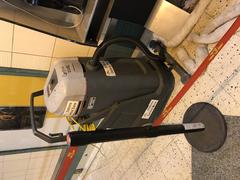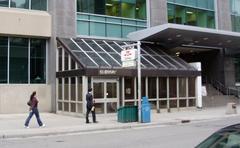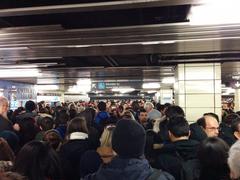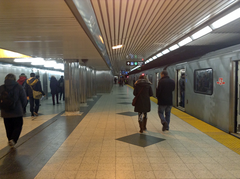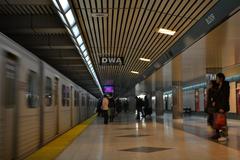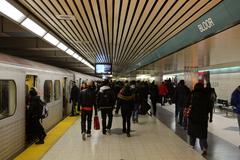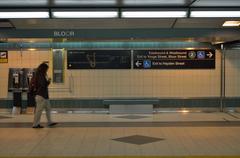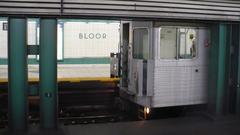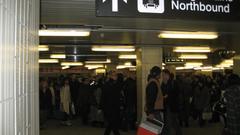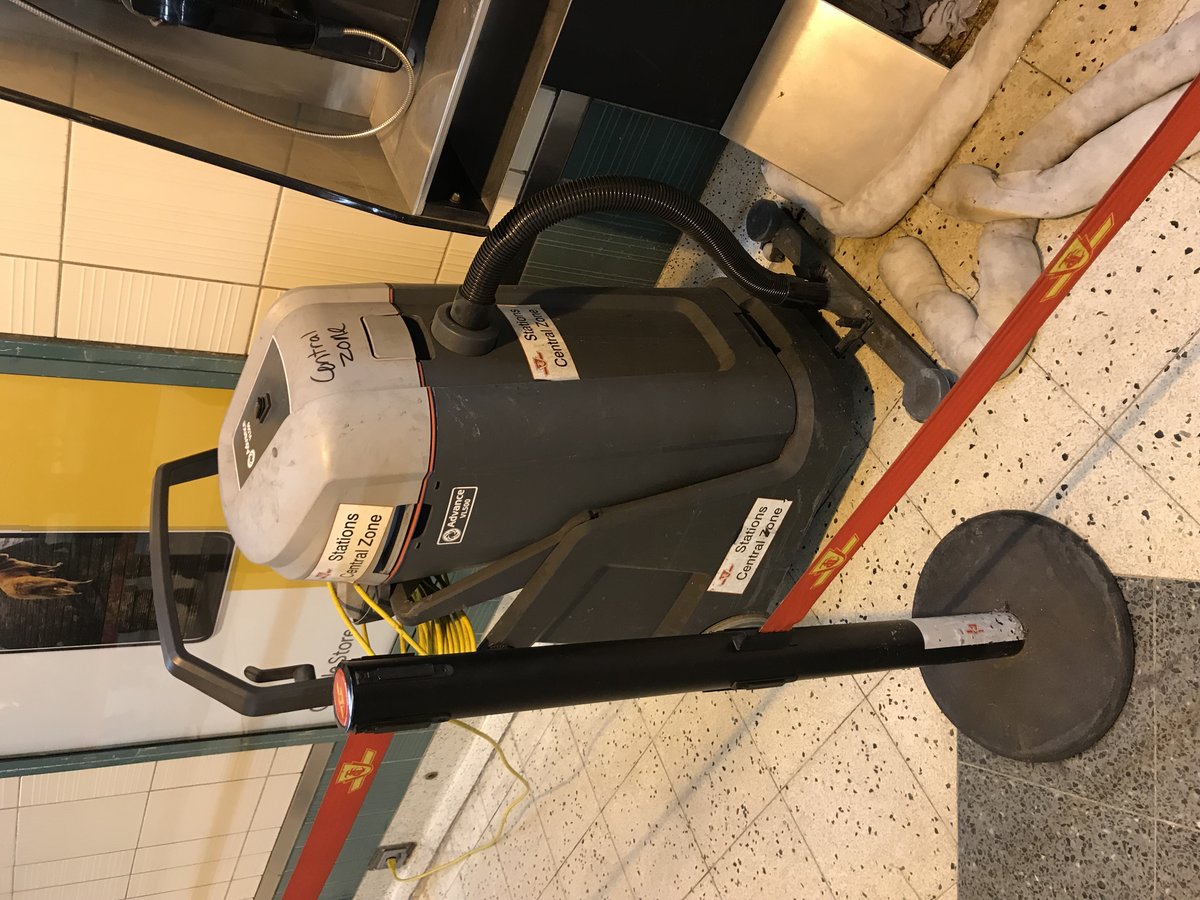
Bloor–Yonge Toronto Visiting Hours, Tickets, and Historical Sites Guide
Date: 14/06/2025
Introduction: Bloor–Yonge’s History and Urban Significance
Bloor–Yonge stands as one of Toronto’s most iconic intersections, steeped in history and central to the city’s evolution. Originally a convergence point for streetcars and modest storefronts in the early 20th century, it rapidly developed into a major commercial and cultural hub. The 1954 opening of the Bloor–Yonge subway station was a transformative milestone, connecting the Yonge-University and Bloor-Danforth subway lines and making it Toronto’s busiest transit interchange. This pivotal intersection has since mirrored the city’s dynamic growth, blending historic architecture with modern developments and serving as a gateway to luxury shopping, world-class museums, and vibrant neighborhoods (BlogTO, Toronto Guardian).
Today, Bloor–Yonge remains a microcosm of Toronto’s urban vitality, renowned for its architectural landmarks like One Bloor East, luxury retail along the Mink Mile, and proximity to cultural destinations such as the Royal Ontario Museum and Toronto Reference Library (Toronto For You, History of Toronto). As the area undergoes a $1 billion-plus capacity expansion and modernization, it continues to adapt to the needs of residents and visitors alike (Kenaidan Murphy, UrbanToronto).
Guide Contents
- Early History and Urban Emergence
- Arrival of the Subway and Transit Transformation
- Commercial and Architectural Evolution
- Bloor-Yorkville: Luxury and Culture
- Station Modernization and Capacity Expansion
- Urban Significance and Connectivity
- Visitor Experience & Practical Tips
- Accessibility and Travel Recommendations
- Notable Changes and Community Impact
- Frequently Asked Questions (FAQ)
- Visual & Media Recommendations
- Internal Linking Suggestions
- Summary and Traveler Tips
Early History and Urban Emergence
The intersection of Bloor Street and Yonge Street has been pivotal in shaping Toronto’s urban landscape. In the early 20th century, the area was marked by bustling sidewalks, small shops, and theatres woven together by streetcar tracks. Archival photos from the 1920s and 1930s showcase its role as a commercial and social hub (BlogTO). The post-war era saw taller buildings rise, reflecting Toronto’s economic boom and cementing the area’s importance as a city center.
Arrival of the Subway and Transit Transformation
The Bloor–Yonge subway station, launched in 1954, quickly became Toronto’s busiest interchange by connecting the north-south Yonge line and the east-west Bloor-Danforth line. This strategic location made it a vital node for commuters and visitors, with daily passenger volumes reaching into the hundreds of thousands (Toronto Guardian).
Bloor–Yonge Station Transit Info:
- Hours: Approx. 6:00 AM–1:30 AM daily
- Fares: Use Presto cards or TTC tokens available at vending machines and authorized retailers
- Accessibility: Fully accessible with elevators and tactile indicators
- Schedules & Updates: Visit the TTC website or app for current information
Commercial and Architectural Evolution
From the 1970s onward, Bloor–Yonge’s skyline changed dramatically with the construction of high-rise office towers and, later, luxury residential buildings like One Bloor East. The area transitioned from an entertainment district with theatres to an epicenter of commerce and culture. Iconic venues such as the Uptown and Backstage Movie Theatres gave way to new developments, reflecting Toronto’s evolving urban identity (Toronto Guardian, BlogTO).
The Rise of Bloor-Yorkville: Luxury and Culture
Bloor-Yorkville, adjacent to the Bloor–Yonge intersection, is synonymous with luxury and sophistication. The “Mink Mile” boasts international designer boutiques and flagship stores like Louis Vuitton, Chanel, and Hermès, alongside Canadian icons Holt Renfrew and Harry Rosen (Toronto For You). Historic and modern architectural elements, art installations, and beautifully landscaped streets define the district’s unique character (History of Toronto).
Cultural attractions include the Royal Ontario Museum and Gardiner Museum, both a short walk from the station, and the Toronto Reference Library anchoring the eastern end of Bloor Street.
Station Modernization and Capacity Expansion
Rapid population growth and rising transit demands have prompted a major modernization of Bloor–Yonge station. In April 2025, the Kenaidan Murphy Joint Venture began a $1 billion-plus project to expand platform space, improve passenger flow, and upgrade accessibility features (Kenaidan Murphy). The two-year development phase aims to deliver a world-class transit hub equipped to serve future generations (UrbanToronto).
Urban Significance and Connectivity
Bloor–Yonge is a transportation nexus, providing seamless access to TTC buses, streetcars, and subway lines. Its central location connects visitors to top attractions, shopping, and cultural venues across Toronto (History of Toronto). Recent infrastructure upgrades include widened sidewalks and bike lanes, reflecting the city’s commitment to a vibrant, accessible environment (UrbanToronto).
Visitor Experience and Practical Tips
Pedestrian-Friendly Streets: Streetscapes are lined with public art, green spaces like Village of Yorkville Park, and a diverse array of dining options (History of Toronto).
Dining: Choices range from quick bites in Manulife Centre to fine dining in Yorkville.
Shopping: Explore the Mink Mile for luxury shopping or discover local boutiques in Yorkville.
Accessibility at Bloor–Yonge
- Elevators at all entrances
- Tactile walking surfaces
- Accessible washrooms
- Staff assistance available
Travel Tips
- Best times: Visit during off-peak weekday hours for a less crowded experience.
- Safety: Area is well-patrolled; standard city precautions apply.
- Nearby Accommodation: Numerous hotels and boutique stays are within walking distance.
- Tickets: Purchase TTC fares at station vending machines or authorized retailers.
- Events: Look out for festivals such as the Yorkville Exotic Car Show and Toronto Jazz Festival (ToDoCanada).
Notable Changes and Community Impact
Redevelopment has sparked debates about heritage preservation, particularly following the demolition of historic theatres and new condo construction. However, ongoing upgrades aim to balance growth with livability, accessibility, and cultural vibrancy (BlogTO).
Frequently Asked Questions (FAQ)
Q: What are the station’s operating hours?
A: 6:00 AM to 1:30 AM daily; hours may vary during holidays or construction.
Q: How do I buy TTC tickets?
A: Use vending machines in the station or visit nearby authorized retailers.
Q: Is the station accessible for wheelchair users?
A: Yes, with elevators, tactile indicators, and accessible washrooms.
Q: What are the must-see nearby attractions?
A: Royal Ontario Museum, Yorkville shopping, Gardiner Museum, Toronto Reference Library.
Q: Are guided tours available?
A: Several walking tours of Yorkville and downtown Toronto are offered by local companies.
Visual & Media Recommendations
Include high-quality images of station entrances, the Mink Mile, and area landmarks. Use descriptive alt text like “Bloor–Yonge station entrance in Toronto” to enhance SEO. Interactive transit maps and virtual tours via the City of Toronto Tourism site can enrich the visitor experience.
Internal Linking Suggestions
For a deeper dive, link to related articles on Toronto’s subway system, Yorkville history, and guides to major attractions.
Summary and Tips for Travelers
Bloor–Yonge is a cornerstone of Toronto’s urban landscape, bridging historical roots and contemporary sophistication. It offers visitors seamless transit connections, luxury shopping, world-class museums, and vibrant neighborhoods (The Star). Ongoing investments in modernization and accessibility promise to further enhance the experience.
Traveler Tips:
- Use the Audiala app for real-time transit updates and audio guides
- Visit during off-peak hours for a more relaxed experience
- Explore beyond the intersection to discover Toronto’s best shopping, dining, and culture
By embracing both its heritage and future, Bloor–Yonge continues to serve as a vibrant, accessible, and memorable gateway to Toronto (Kenaidan Murphy, UrbanToronto).
References
- Exploring Bloor–Yonge: History, Transit Info, and Toronto’s Vibrant Urban Hub, 2025, BlogTO (BlogTO)
- Exploring Bloor–Yonge: History, Transit Info, and Toronto’s Vibrant Urban Hub, 2019, Toronto Guardian (Toronto Guardian)
- The Rise of Bloor-Yorkville: Luxury and Culture, 2025, Toronto For You (Toronto For You)
- The Rise of Bloor-Yorkville: Luxury and Culture, 2025, History of Toronto (History of Toronto)
- Ongoing Modernization and Capacity Expansion, 2025, Kenaidan Murphy (Kenaidan Murphy)
- Urban and Cultural Significance of Bloor–Yonge, 2023, UrbanToronto (UrbanToronto)
- Commercial and Retail Landscape, 2025, The Star (The Star)
